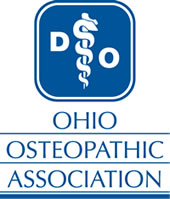For the Public
Frequently Asked Questions
Q. What is Osteopathic Medicine?
A. Osteopathic medicine is a complete system of medical care with a philosophy that combines the needs of the patient with the current practice of medicine, surgery and obstetrics, and emphasizes the interrelationships between structure and function, and the appreciation of the body's ability to heal itself.
Osteopathic medicine was developed in 1874 by a frontier doctor named Andrew Taylor Still. He was dissatisfied with the practices and effectiveness of 19th century medicine. He studied good health so that he could understand the process of disease. This led him to a concept of medicine that was based on wellness and on the unity of all body parts. He identified the musculoskeletal system as the key element of health. He recognized the body's ability to heal itself through proper nutrition and staying fit.
Today, osteopathic physicians act as teachers to help each patient take more responsibility for their own health and to choose healthier habits. They are on the cutting edge of modern medicine and are able to combine modern technology with their own highly-developed senses, to watch and listen carefully and to see the whole patient and not just the disease or injury.
Q. What do the Initials D.O. Stand for?
A. D.O. is the abbreviation for Doctor of Osteopathy or Doctor of Osteopathic Medicine. Commonly known as osteopathic physicians, DOs practice a "whole person" approach to medicine. Instead of just treating symptoms, osteopathic physicians concentrate on treating the whole patient. They focus on preventive health care and believe that the body is self-repairing, self-sustaining and self-adjusting and that it is the physician's job to help the body heal itself.
There are only two kinds of physicians qualified to be licensed for the unlimited practice of medicine in all 50 states: those who have earned the DO degree and those who hold the MD degree.
There are 36 accredited colleges of osteopathic medicine that award the DO degree. They educate nearly 31,000 future physicians—25 percent of all US medical students—at 57 teaching locations in 33 US states. This figure includes Ohio University Heritage College of Osteopathic Medicine (OU-HCOM). It was established in 1975 in Athens by an act of the Ohio General Assembly and has now grown to three campuses in Athens, Dublin, and Cleveland.
Listen to how osteopathic physicians at Doctors Hospital in Columbus, Ohio, explain the osteopathic difference.
Q. What "Extras" do Osteopathic Physicians Bring to Medicine
A. As part of their medical school curriculum, osteopathic physicians receive extra training in the musculoskeletal system, the body's interconnected system of nerves, muscles and bones that make up two-thirds of its body mass. This training provides osteopathic physicians with a better understanding of the ways that an injury or illness in one part of your body can affect another. Many DOs use osteopathic treatment (OMT) with other traditional medical procedures to diagnose and treat injury and illness. This makes them a favorite among Olympic athletes, sports teams and personal fitness enthusiasts who focus on diet, exercise and manipulation.
Q. What is Osteopathic Manipulative Treatment?
A. Osteopathic manipulative treatment (OMT) refers to approximately 25 different types of manual procedures performed by a physician to alleviate pain or treat problems related to an injury or medical condition. A DO completes a structural diagnosis by using an expanded observation and palpatory examination of the neuromuscular skeletal system with its venous, lymphatic and pulmonary interactions to identify the presence of significant impediments to health and wellbeing. OMT is used by a DO in conjunction with medical, surgical, or rehabilitative interventions.
Q. What are the Differences Between DOs and Chiropractors?
A. DOs have a medical education that includes a four-year undergraduate degree, a four-year medical school degree, internships, and at least one hospital residency. In addition, DOs prescribe medicine and perform surgery. Chiropractors do not prescribe medicine and focus on the back and spine, while DOs are trained in manual techniques for all of the body's regions. Because DOs are fully-licensed physicians, they may develop a treatment plan incorporating osteopathic manipulation with other traditional methods.
Q. How do MDs and DOs Compare in Qualifications?
A. Both DOs and MDs are complete physicians who:
* Are able to prescribe medicine;
* Are licensed to diagnose, treat and perform surgery;
* Have undergraduate degrees, graduated from medical school and have post-graduate training;
* Are licensed by the state;
* May pursue a specialty (two or more years of further education/training);
* Belong to the same health plans; and
* Are equally accepted by the military.
For more information on osteopathic medicine and the osteopathic profession, click here to visit the American Osteopathic Association website. www.osteopathic.org
Other questions about osteopathic medicine can be directed to the OOA's central office at 1-800-234-4848.



